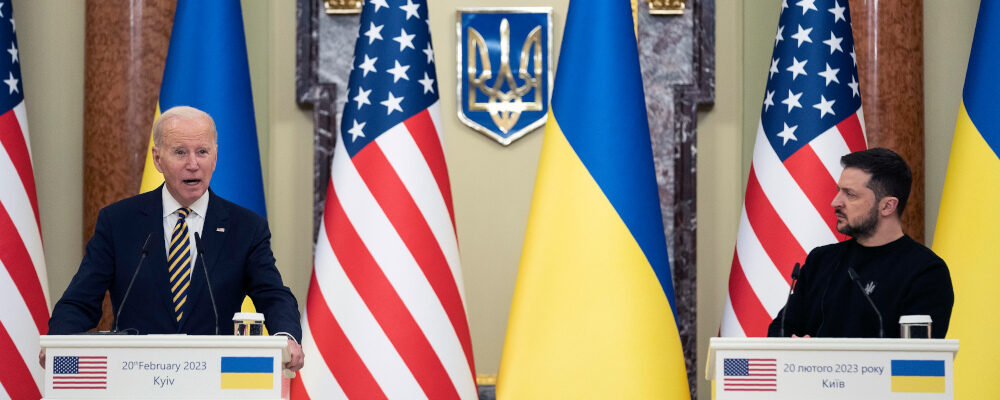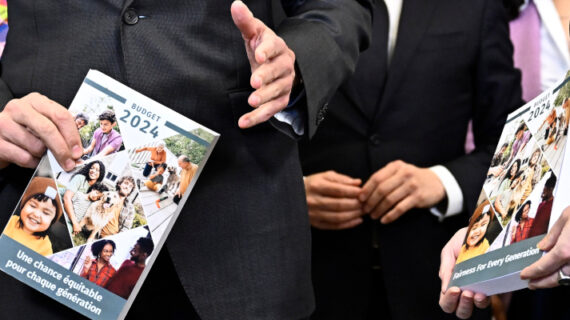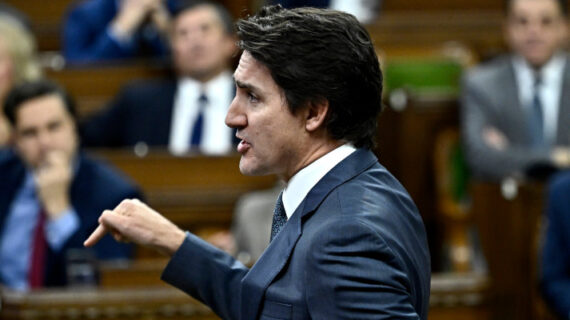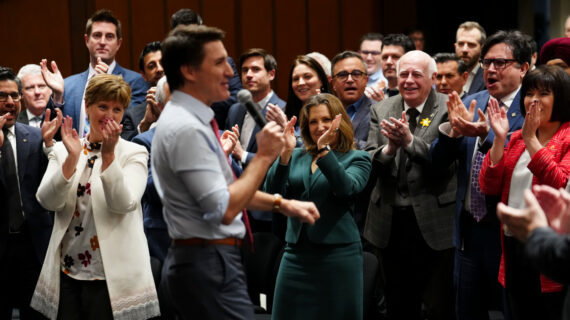The past year has seen various diverging views about how to understand Russia’s invasion of Ukraine. The best approach to understanding the war remains to view it through the politics of the two combatants. It is not an esoteric discussion—the politics of the two states touch every part of the war and hold great explanatory power. It is a tale of two states on diametrically opposing paths, which has guided their actions throughout the conflict.
The internal politics of Vladimir Putin’s Russia is the catalyst that started this war. Much has been made of his broader imperial ambitions and desire to return Russia to a place of strength and pride unseen since the collapse of the USSR. Regardless of the origins of the invasion, the internal dynamics and political calculations have determined its outcome.
Russian corruption
At this stage, Putin represents a textbook autocrat. While he came into power through the democratic process, he has effectively dismantled that system and utterly undermined the state and society for his ends over the intervening 20 years. Russian society has increasingly been fed a firehose diet of state-controlled propaganda—a xenophobic nationalism that has vilified the West as decadent and threatening. It has also glorified the Soviet sacrifices that resulted in the victory over Nazi Germany in the Great Patriotic War. It masked his growing efforts to destroy independent elements within society and the vast corruption that Putin and his supporters have undertaken, while preparing the populace for the war it is now undertaking.
Like many historical autocratic regimes, palace intrigue drives a lot of behaviour. The key weakness of any autocrat is a coup undertaken by members of the elite. Yet, in some ways, Putin has used the war as an opportunity to eliminate any potential opposition to his rule, including oligarchs and state officials. Violence and coercion are routinely deployed within Russia to control the population, but its naked application was on full display in occupied Ukrainian territories, places like Bucha, Izyum, or Kherson.
Personal militias have emerged tied to key regime personalities, like Yevgeny Prigozhin and Ramzan Kadyrov. These individuals are jockeying for greater political influence and battlefield glory. They likely also serve a useful role within the Kremlin—it ensures that various internal elites remain weak as they jockey for position. Yet these personal militias are highly problematic in that they tend to result in inefficient distribution of scarce resources and complicate organizational planning on the ground. Furthermore, it’s evident that Putin remains committed to the military’s senior leadership who are responsible for Russia’s poor battlefield performance, likely because many of them are politically reliable and unlikely to usurp him from power.
This is a core failing of his autocratic regime. Putin relies on a small coterie of advisers who almost certainly do not provide accurate advice. His derisive views towards Ukraine resulted in his staff badly underestimating the potential Ukrainian resistance and overestimating their own potential to take over the country. With the invasion founded on mistaken strategic and political principles, every operational and tactical decision that flowed from them was poisoned. Field commanders anticipated a relatively easy campaign, thus their operational plans were based on the unrealistic expectation that they would quickly take over the country.1One can recall the scenes of the 35-kilometre armoured vehicle traffic jam—a sure sign that the Russians did not expect determined resistance and had not adequately planned their logistics operation for such an eventuality. Another was when Russian federal police forces for crowd control were sent into Kyiv in the first days of the war, only to be decimated by Ukrainian forces.
While many analysts pointed out that the Russian Armed Forces had undergone significant military reforms and modernization since the 2008 Georgian war, their actual combat prowess in the war has been exceedingly poor. The initial phases of the invasion were highly disorganized, with many troops poorly equipped and trained, and conducted with a less-than-ideal force structure. While the strategic failure and poor planning share some of the blame, another factor that is intrinsic to Putin’s regime must be considered: rampant corruption. Basic necessities for troops were either missing or were not as advertised. Twitter and telegram channels are replete with Ukrainian and even Russian soldiers pointing out the shoddy state of Russian equipment or expired food.
Culturally, their forces seem wedded to a highly centralized approach to decision-making and have been slow to adopt new tactics. It’s part of the reason why Russia’s losses, of both men and materiel, have been so dramatic.2For example, according to the International Institute of Strategic Studies, Russia has lost 50 percent of the stock of its primary battle tank, the T-72B3, and has been forced to refurbish 1960s-vintage T-62 tanks as a replacement. The lack of materiel, such as combat vehicles and artillery support, has forced the Russian Army to undertake manpower-intensive approaches to combat, i.e., sending unsupported human wave attacks to try to overrun Ukrainian positions.
None of this should be surprising. Russia is an authoritarian state willing to undermine civil liberties across its entire society, so sending tens of thousands of unsupported soldiers to their deaths is consistent with its modus operandi. In a narrow sense, the core question is when do the casualties start to unravel the domestic stability of Putin’s regime?
That might be a long time coming. The war has strengthened Putin’s grasp, something that does not bode well for Ukraine and the war. Furthermore, Russia’s economy has transitioned to a partial autarky due to international sanctions and deliberate policy moves to build domestic self-sufficiency. While it remains wedded to petroleum and raw minerals exports to bring in foreign capital, the economy is able to function well enough to support the war effort.
Ukrainian reform
In contrast, Ukraine has seen slow, fitful efforts of meaningful reform since the 2014 Maidan revolution. Zelenskyy himself swept in on a wave of popular support as a new man in politics, but anti-corruption reforms had lagged somewhat in his first two years in office. One area it had been active in was removing the Kremlin’s influences on Ukraine, which may have triggered the ire of Putin in the year before the invasion.
Admittedly, the Ukrainian government’s performance before the invasion has come under significant scrutiny; it likely did not sufficiently heed warnings provided by Western allies about Russia’s incoming invasion. The recent arrest and dismissal of several high-ranking officials for alleged corruption illustrate the extent to which these problems are entrenched, despite the year-long struggle for national survival.

One area that was more successful in its reforms was the military. Since 2014 (and even earlier for some specialist areas), the United States, United Kingdom, Canada, and other NATO allies provided significant support to train the Ukrainian armed forces from top to bottom. This, combined with the continuing slow-burning conflict, helped to significantly improve the military’s combat capability, which became evident in the days after the invasion. Ukrainian forces seem to be much more adaptive to new arms and doctrines and have conducted operations that increasingly resemble NATO approaches: application of intelligence, precision-guided munitions, and smaller, nimble units. This transition is still incomplete, but it has provided a significant advantage over Russian forces.
Still, it may not be enough. While Russian forces seem poorly equipped, trained and led, their numerical superiority and level of fortifications in the occupied territories make pushing them, even with the major infusion of NATO standard arms and training, not at all certain. Any offensive may look like the months-long effort to retake Kherson, which was slow, deliberate, and cost the Ukrainian armed forces significant casualties.
Furthermore, Ukraine has seemingly operated more closely to a traditional perspective on Western civil-military relations. Broader political direction is apparently given by the prime minister and the defence minister, but operational and tactical decisions seem to be largely the purview of the appropriate military commanders—strategic decisions blend the two together. Several generals and leaders have been dismissed for poor performance and/or incongruent aims, in stark contrast to the Russian experience where political reliability seems paramount.
With the collapse of the Russian effort to take Kyiv and Kharkiv in April of last year, the immediate threat to the Zelenskyy government has receded. Rather the centre of gravity has moved west, towards the capitals of its major allies: Berlin, Brussels and Washington. The continued economic, political, and military support from Europe and North America is essential for its very survival.
Whereas Russia has shunned the West, and to some extent, the international community, Ukraine is almost wholly dependent on it. While the effective destruction of the Russian Federation as a military power has been a strategic boon to NATO and its allies, the costs of the war, particularly keeping the Ukrainian economy afloat, cannot be counted on to continue indefinitely.
What comes next?
Considering the military and economic reality of a much-diminished Russian military and state apparatus, it is unlikely that Putin believes that the total victory he desired one year ago is achievable. If that is the case, the Kremlin is likely looking to freeze the current conflict, holding on to his gains and forcing Kyiv to make territorial concessions on some of Russia’s newly occupied territories.
It’s difficult to know what is the durability of the existing political equilibrium within Russia or Putin’s perceptions of it. In many ways, that is the key variable. The longer the Kremlin can extend the conflict, the more likely it can try to undermine Western support for Ukraine. Putin has also worked proactively to hasten this process by returning to his well-worn playbook of trying to subvert his adversaries through a corrosive mix of corruption, disinformation, and political intrigue.3Several actors are already playing their roles. They include Victor Orban, Silvio Berlusconi, and Donald Trump, as well as a curious mix of far-left and right-wing pressure groups, such as some members of the U.S. Republican House caucus. All Russia needs is for the West to curtail its support in order to return Ukraine back to the bargaining table.
Kyiv for its part must continue to show progress for the investment made by its allies. Its highly anticipated spring offensive is likely to be a key moment. This is not to say that a failure will result in countries abandoning their support—rather, it may increase the domestic opposition to their efforts and make it politically difficult to maintain its high levels of spending.
While the past year has seen a remarkable series of events, in many ways the political dynamics within the two states have remained fairly consistent. Their effects are visible in almost every aspect of the conflict—right down to the experiences of individual soldiers on the field. At the present moment, it seems fairly evident that neither side—Russian elites, nor Ukraine and its alliance—have any interest to make major concessions. But their objectives are not necessarily the same.
Putin’s objectives are more broadly political in nature, and a stalemate at the front may well be sufficient for his purposes, while it is likely that Ukraine requires a major series of military victories to achieve its aims. Regardless, the battlefield situation will need to evolve further before a resolution to the conflict will be at hand.




